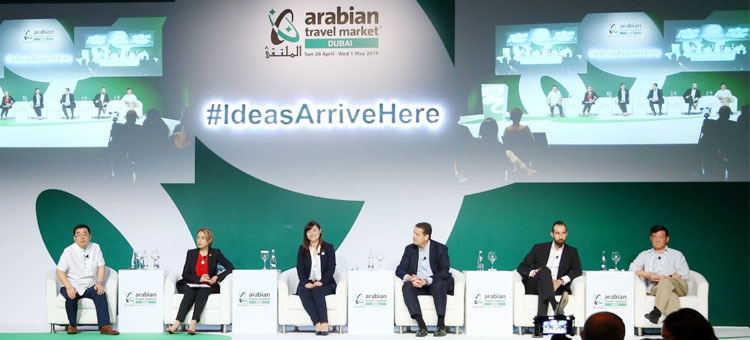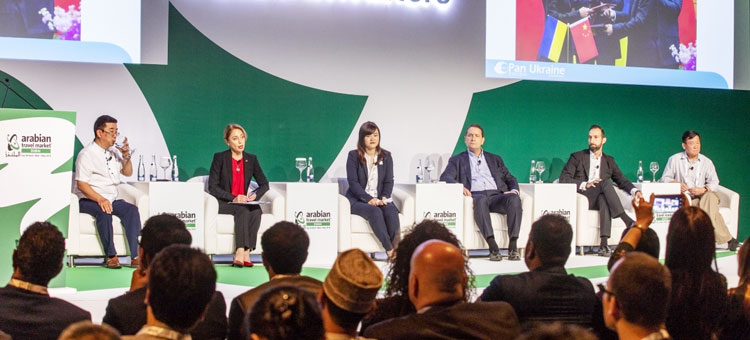Dubai: The GCC must deliver unique and tech-enabled experiences designed for free independent travellers (FITs) if it is to grow its market share among China’s outbound tourists, according to experts speaking at Arabian Travel Market (ATM) 2019. The overall number of outbound tourists from China is projected to hit 224 million by 2022, according to research conducted by Colliers. United Nations World Tourism Organization (UNWTO) figures show that the GCC is on course to attract 2.9 million ofthese visitors.
Gulf hospitality firms can attract younger Chinese tourists with tech-enabled services and unique experiences, according to experts speaking at ATM 2019. The GCC is expected to attract 2.9 million Chinese visitors by 2022 as regional governments work to strengthen bilateral ties with the source market. China’s overseas travellers top charts, spending $258 billion worldwide according to UNWTO figures
Panellists speaking at the Arabia China Tourism Forum, which took place on the Global Stage at ATM 2019, explored how Gulf states can boost Chinese visitation further and cater to younger travellers arriving from the Far East.
Moderator Dr. Adam Wu, CEO of CBN Travel & MICE and World Travel Online, said: “The trend is moving away from group travel to FITs. Approximately 51 per cent of Chinese travellers [come from this segment]. They are travelling in smaller groups but it’s also the age groups that are changing.”
Unique experiences represent a key component when it comes to convincing younger Chinese travellers to visit the GCC. In addition to comfortable accommodation and accessible amenities, panellists noted that China’s FITs are looking for attractions that are not available in other markets.
Terry von Bibra, GM Europe, Alibaba Group, said: “Smaller groups [of Chinese travellers] are going to new places to discover and have unique experiences – special experiences that they can share with friends on social media, which is very important.
“You cannot underestimate the importance of the ideas of discovery and uniqueness. In my job, I see this across all aspects of trade with China. [Customers] want to understand why things are unique and special. The more you can help them understand this, the better job you are doing.”
In addition to unique experiences, Xiuhuan Gao, Head of Asian Market – Overseas Promotions Department, Sharjah Commerce and Tourism Development Authority (SCTDA), said that small, personal touches are also helping the GCC’s hospitality sector to boostarrivals from China, such as Chinese condiments and in-room snacks.
Gulf countries are already taking steps to strengthen ties with China and appeal to the country’s international tourist base. Chinese passport holders can obtain 30-day visas on arrival in Oman, Bahrain and Kuwait, and the launch of Saudi Arabia’s tourist visa is expected to lead to further increases.
Dubai’s Department of Tourism and Commerce Marketing (DTCM), meanwhile, has partnered with China’s Tencent to promote the emirate as a preferred destination, and to bring the company’s WeChat and WeChat Pay platforms to the UAE. Panellists agreed that GCC hotels must also do more to facilitate a seamless visitor experience.
Rami Moukarzel, Vice President of Development and Acquisitions – Middle East and North Africa, Louvre Hotels Group, said: “We are seeing an influx of Chinese travellers across all segments. As a hotel industry, we need to be ready for the influx that is coming.”
Moukarzel told attendees that in addition to establishing market-specific booking platforms and social media channels, China-owned Louvre Hotels Group has also partnered with relevant mobile payment systems to ensure that Chinese travellers enjoy a seamless experience when visiting its Middle East properties.
According to figures released by the UNWTO, Chinese visitors are the highest spending overseas travellers on the planet, shelling out $258 billion in 2017. Attracting more of these individuals would benefit national economies across the GCC.
As Gulf destinations account for approximately one per cent of China’s outbound tourist market at present, the panel agreed that there remains significant room for growth – as long asthe hospitality professionals create China-specific offerings and content that appeal to the country’s shifting market demographics.
Designed to enabletravel, tourism and hospitality professionals to explore potential opportunities, the Arabia China Tourism Forum is one of severalevents that will be hosted on ATM 2019’s Global Stage this week. Other topics to be placed under the microscope includethe Saudi Arabian market, halal tourism and industry innovations.
Running until Wednesday, 1 May, ATM 2019 will see more than 2,500 exhibitors showcase their products and services to visitors at Dubai World Trade Centre (DWTC).Viewed by industry professionals as a barometer for the Middle East and North Africa (MENA) tourism sector, last year’s edition of ATM welcomed 39,000 people, representing the largest exhibition in the history of the show.







